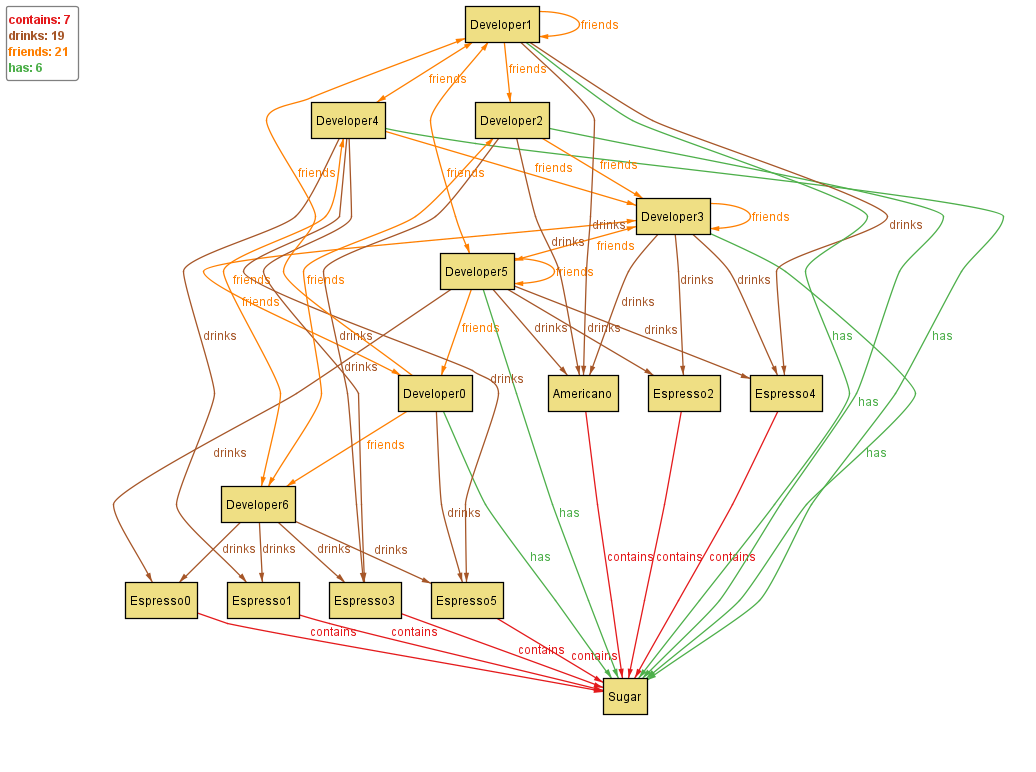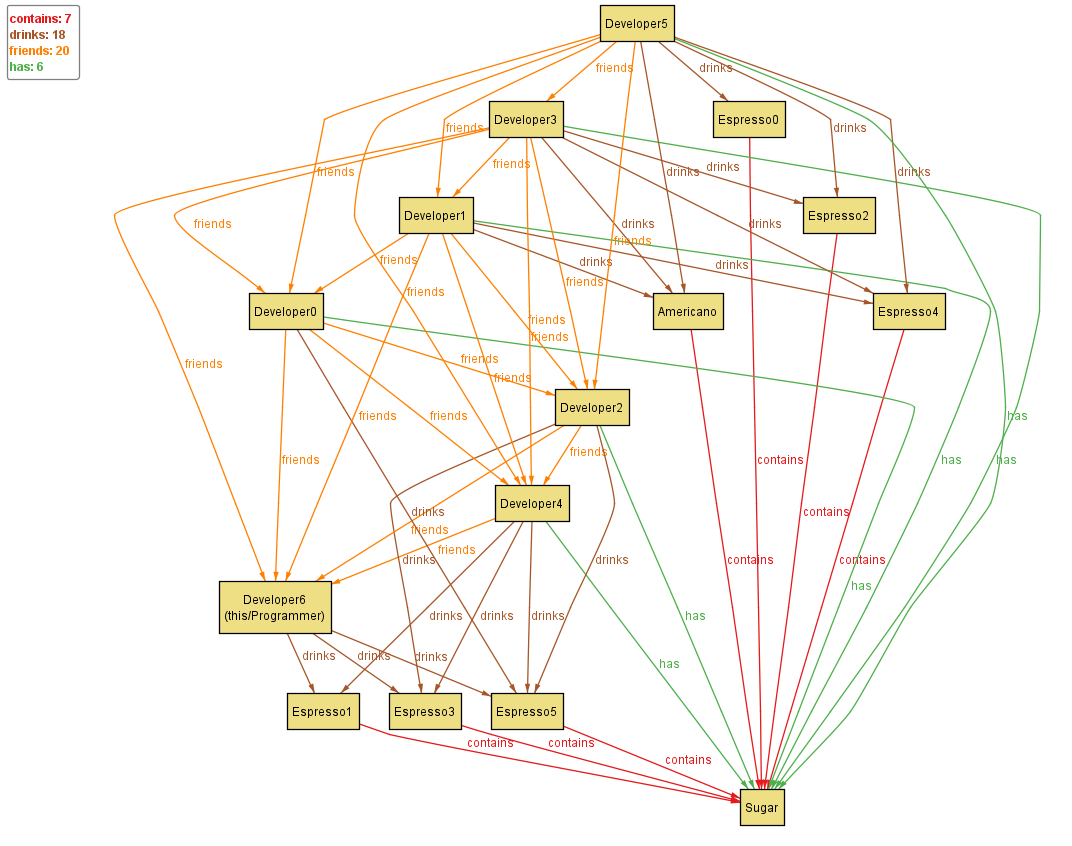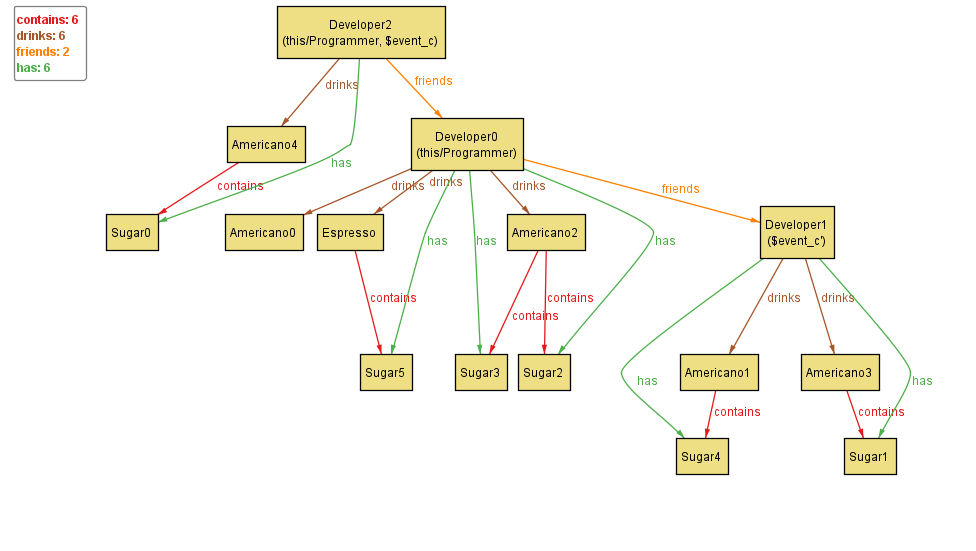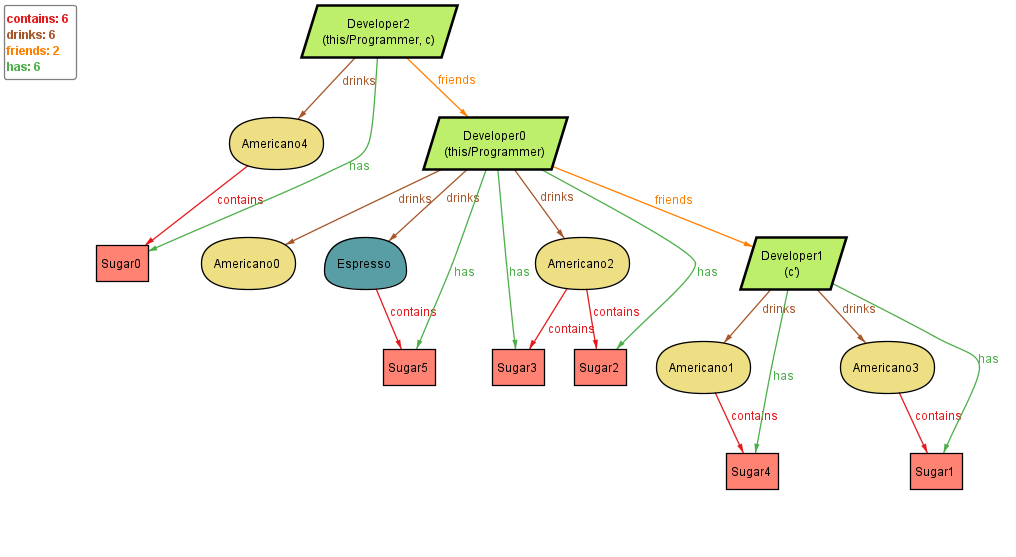Probe of software design with Alloy
Alloy formal language Estimated reading time: 8 minutesSometimes we have an idea and we want to check that this idea has a realistic chance for life. In other words, we want to check the design of the idea. If we are talking about software - often we want to check the design of some approach.
Intro
This is not something new, but due to some reason(s), not a very popular activity. To solve this, we may want to use some formal language.
One of the first approaches was a language specifically created for this and known as Z notation. If u check the link, u can see, that this language is quite old. I didn’t use it, so not sure about the pros and cons.
More interesting for me - is the Alloy language - a specification language (a subtype of formal language).
I didn’t know about such an approach despite the fact that I am often faced with such kinds of tasks, especially when designing some algorithms for solving different objectives. I was pointed to this language by Luomein. If u reading this post - thank you for this!
As mentioned in a book available at alloytools, the main ideas and concepts used in Alloy are not new:
Jim Horning and John Guttag described a basic logic description concepts approach in a paper in 1980, in which a theorem prover was used to answer questions interactively about a candidate design. That paper was a major source of inspiration for Alloy.
So we may think about Alloy as about modern tool for modeling and exploring software design, that uses well-defined, time-proved ideas.
Off-cause this is not a silver bullet, and some problems and limitations still exist in Alloy.. but where it doesn`t?
Why do we need this? As for me, there are a few answers:
- to be sure that something is possible
- to be able to eliminate and fix problems with minimum costs for it
- to prove the concept
- to speed up design
- to inspect existing systems for weakness
- to predict the behavior of the system
Example
I like an approach when u have a lot of theory done and then u can switch to the practice. For theory I can recommend for sure unofficial doc and lecture about Formal Methods, also alloy-cheatsheet may be useful.
For practice I like the example about farmer, fox, chicken and grain or about Königsberg bridges - puzzle about bridge crossing
abstract sig Landmass {}
abstract sig Bridge { connects: set Landmass } { #connects = 2 }
one sig Bridge1 extends Bridge {} { connects = N + W }
one sig Bridge2 extends Bridge {} { connects = N + W }
one sig Bridge3 extends Bridge {} { connects = N + E }
one sig Bridge4 extends Bridge {} { connects = E + W }
one sig Bridge5 extends Bridge {} { connects = E + S }
one sig Bridge6 extends Bridge {} { connects = S + W }
one sig Bridge7 extends Bridge {} { connects = S + W }
sig Path { firstStep: Step }
sig Step {
from, to: Landmass,
via: Bridge,
nextStep: lone Step
} {
via.connects = from + to
}
fact {
all curr:Step, next:curr.nextStep |
next.from = curr.to
}
fun stepss(p:Path): set Step {
p.firstStep.*nextStep
}
pred path() {
some p:Path | stepss[p].via = Bridge
}
run path for 8 but exactly 1 Path
This will produce a nice task-solving graphical representation.
Even these examples should stimulate u to learn Alloy. But to be more precise - let’s create something on our own - only in this way can feel the language ;].
I decided to describe a coder and a coffee with or without sugar. ;]
I won’t cover all lexical aspects of the language, if u interested in it - check the link above.
So our goal - is to check the possibilities of the language within a useless model - coder vs coffee. This model will not cover some interaction or caffeine intake ) offcause.
So, the very first step - is to define the models: Coffee, Coder, and Sugar. We also can assume that we have few types of coffee and few types of coders:
sig Sugar {}
abstract sig Coffee {
, contains: set Sugar
}
sig Espresso extends Coffee {}
sig Americano extends Coffee {}
abstract sig CoffeeDrinker {
, drinks: set Coffee
, has: set Sugar
}
sig Developer extends CoffeeDrinker {}
sig Programmer in Developer {}
Here u already can see the power of the language - abstraction, inheritance, and relations. The main point from the declaration above - u need to think about everything in terms as u think about set. I love things that ask u to switch the way u usually think - this will open additional possibilities for u.
The important moment here - is to understand every keyword and meaning in the code before going forward. For example, u need to understand the difference between extend and in keywords. The links above have a lot of examples and nice explanations like the one below (grabbed from slides to lectures):
The beauty and power of Alloy - is that u already can test u’r model - having no rules and constraints, but just a declaration.
Offcause result - is just one of the tons possible model solutions - not much. Yet. We need rules and some facts about how components of our model interact each with other.
We also can modify a code a bit by adding additional relations - for example, our developers can have a friend now:
, friends: set CoffeeDrinker
And to make a picture a bit more interesting, let’s inspect a few objects:
run event {} for 7
The result is quite interesting:
We have a raw model here and a few problems. The most obvious are:
- some developer is a friend to itself (maybe someone can, but not in our models ;])
- all coffee and all sugar are shared between different instances
To provide a fix, we should modify our models and provide additional facts. We can add a rule, that says: “developer can’t be a friend to itself”:
-- coffeeDrinker is not a friend to itself
fact selfFriend {
no p: CoffeeDrinker | p in p.^friends
}
The beauty of programming is that we can achieve the same effect in a different manner, and here, in Alloy, we can do the same as above in fact only by specifying the type of relation as
disj
The result is a bit better model:
Better. Now imagine what we can achieve if we specify all the rules - quite a good and powerful solution for checking a theory, or design. Let’s modify a bit our code, by making coffee and sugar not shared, with disj keyword.
If we want, we can make all coffee without sugar, or add some other rules:
-- programmer does not like too much sugar
fact "named fact" {
some c: Programmer | lone c.has
}
fact {
all s: Sugar | s in CoffeeDrinker.*drinks.contains and s in Coffee.*contains
}
fact "dev's coffee can have only sugar that developer have" {
all d: CoffeeDrinker {
d.has = d.drinks.contains
}
}
The result can be received momentary:
we can even add style, for better understanding:
The full code for this important model
sig Sugar {}
abstract sig Coffee {
-- no shared sugar
, contains: disj set Sugar
}
sig Espresso extends Coffee {}
sig Americano extends Coffee {}
abstract sig CoffeeDrinker {
, drinks: disj set Coffee
-- no shared sugar
, has: disj set Sugar
}
sig Developer extends CoffeeDrinker {
, friends: set CoffeeDrinker
}
sig Programmer in Developer {}
run event {} for 7
-- coffeeDrinker is not a friend to itself
fact selfFriend {
no p: CoffeeDrinker | p in p.^friends
}
-- programmer does not like too much sugar
fact "named fact" {
some c: Programmer | lone c.has
}
-- not all CoffeeDrinker is a Programmer - does nothing,
-- thus this is from the declaration, just to demonstrate pred
pred notAProgrammer[c: CoffeeDrinker] {
not (c in Programmer)
}
fact {
some c: CoffeeDrinker | notAProgrammer[c]
}
fact {
all s: Sugar | s in CoffeeDrinker.*drinks.contains and s in Coffee.*contains
}
fact "dev's coffee can have only sugar that developer have" {
all d: CoffeeDrinker {
d.has = d.drinks.contains
}
}
Conclusion
We can apply this to real-life problems in programming and other areas. As mentioned in this article the variety of the Alloy usage is wide - from analysis to improvement.
As we experimented with Alloy, we came to realize how helpful it is to have a tool that can generate provocative examples.
I see the perfect application for this language in complex software design and teaching - momentary results and powerful configuration - a key.
Resources
- formal language
- Z notation - Wikipedia
- Alloy (specification language) - Wikipedia
- Unofficial docs
- Post about alloy
- alloytools.org
- alloy-cheatsheet
- stackoverflow feed
- alloy
- git hub in alloy
- models
- database in alloy
- lectures alloy
- intro to alloy
- Jim Horning and John Guttag described a basic logic description concepts approach in a paper in 1980
Share on:








